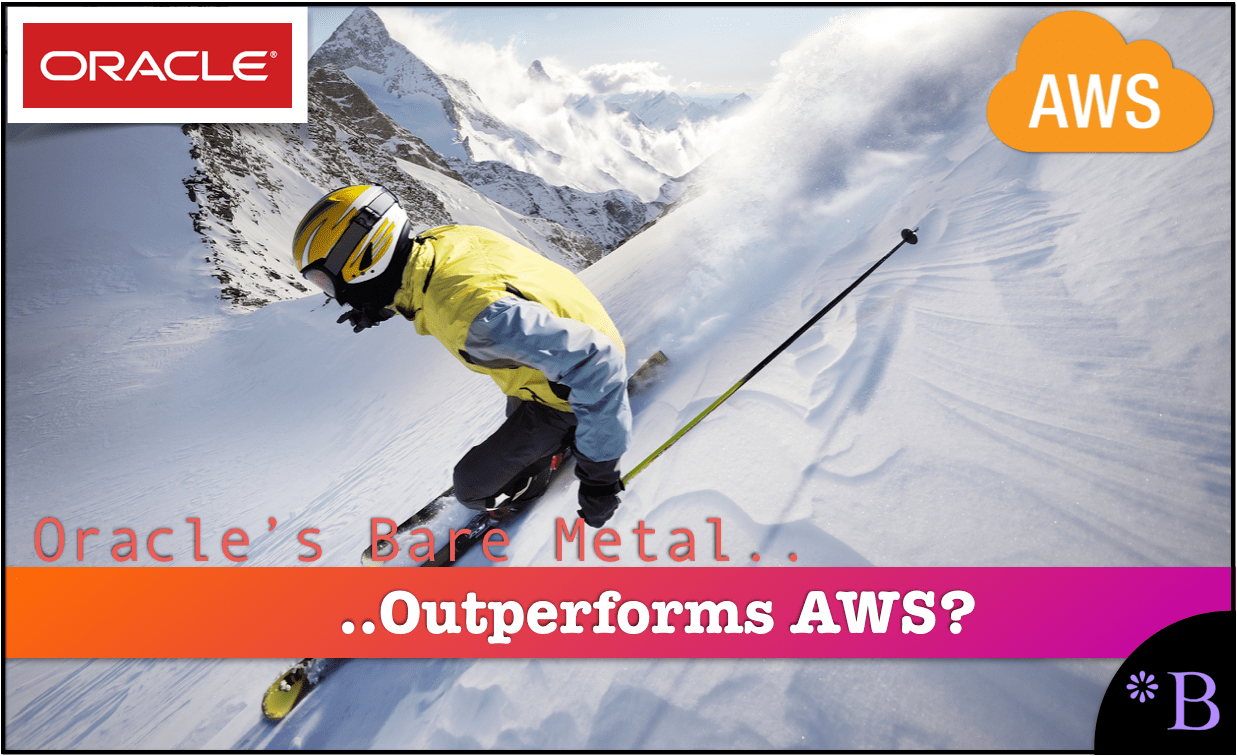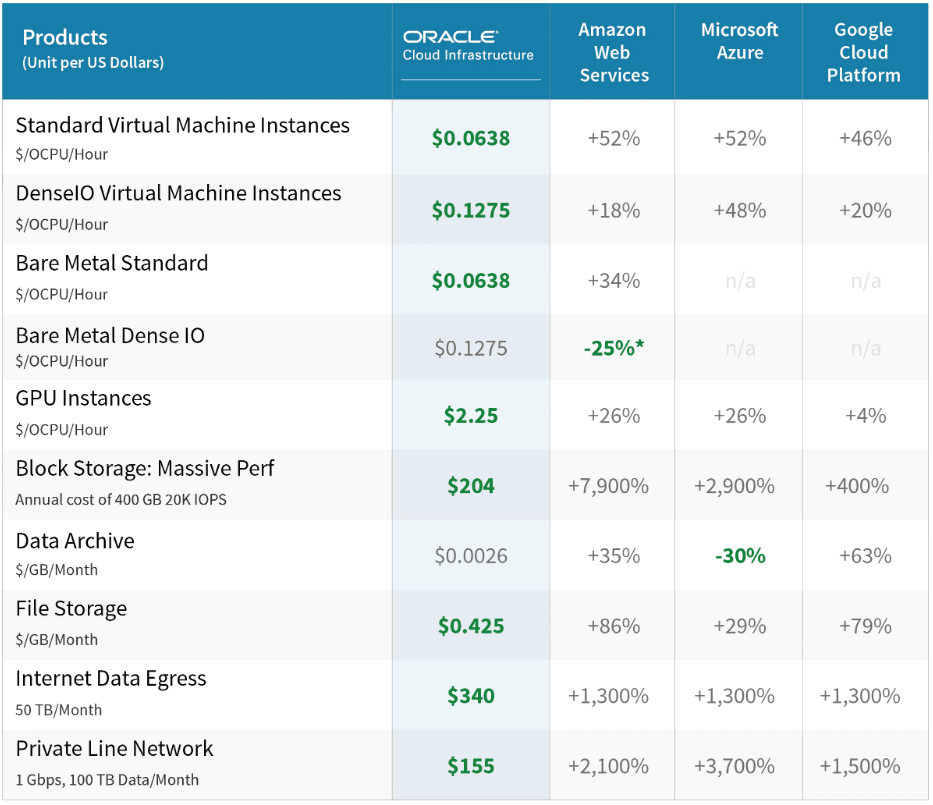Does Oracle’s Bare Metal Outperform AWS’s Bare Metal?
Executive Summary
- Oracle has made some bizarre claims around its bare-metal performance versus Oracle.
- We evaluate the accuracy of these claims in this article.

Introduction
Oracle begins by proposing that customers have been waiting for their cloud to arrive.
Our References for This Article
If you want to see our references for this article and other related Brightwork articles, see this link.
Lack of Financial Bias Notice: The vast majority of content available on the Internet about Oracle is marketing fiddle-faddle published by Oracle, Oracle partners, or media entities paid by Oracle to run their marketing on the media website. Each one of these entities tries to hide its financial bias from readers. The article below is very different.
- This is published by a research entity, not some dishonest entity that is part of the Oracle ecosystem.
- Second, no one paid for this article to be written, and it is not pretending to inform you while being rigged to sell you software or consulting services. Unlike nearly every other article you will find from Google on this topic, it has had no input from any company's marketing or sales department. As you are reading this article, consider how rare this is. The vast majority of information on the Internet on Oracle is provided by Oracle, which is filled with false claims and sleazy consulting companies and SAP consultants who will tell any lie for personal benefit. Furthermore, Oracle pays off all IT analysts -- who have the same concern for accuracy as Oracle. Not one of these entities will disclose their pro-Oracle financial bias to their readers.
See the following quotation.
“Enterprises have long sought a cloud that’s optimally tuned to run large, complex production systems. Today, there’s finally a cloud that’s up to the task. Oracle Cloud Infrastructure was built from the ground up to perform better and more consistently than the competition while costing less at scale. Oracle cloud users don’t have to worry about highly variable performance results from day to day, or moment to moment. Today, there’s finally a cloud that’s up to the task. Oracle Cloud Infrastructure was built from the ground up to perform better and more consistently than the competition while costing less at scale. Oracle cloud users don’t have to worry about highly variable performance results from day to day, or moment to moment.” – Oracle
Oracle is built on co-located facilities; in fact, 100% of its internal facilities or data centers are co-located facilities, which means Oracle does not own them. This seems quite deceptive and is consistent with Oracle hiding from customers that it owns none of its data centers.
Oracle Backs Cloud with SLAs?
“With the latest high-end components, support for open standards and multicloud strategies, and an unwavering commitment to protecting sensitive business data, Oracle Cloud Infrastructure is perfectly suited to meet the needs—and exceed the expectations—of today’s enterprise IT teams. And Oracle backs performance claims with the best service level agreement (SLA) in the business:” – Oracle
This is also false.
Because Oracle uses colocation centers, it has a loophole out of its SLAs that render the SLA’s unenforceable. Oracle has been failing to meet SLA levels and has not been considering customers because it is blaming the colocation facility for the downtime. This is covered in the quotation from Ahmed Azmi.
“First, Oracle cloud SLA doesn’t recognize outages caused by third parties as eligible for service credit. This applies to metered and un-metered services as you can read on page 5, section 3.3, The Definition of Unplanned Downtime.”
Oracle claims that their bare metal in Oracle Cloud outperforms AWS bare metal.

Why is Oracle’s bare metal so much better than AWS? One can choose the size of the hardware that one wants. Therefore it would be bizarre to see such a difference. Oracle is most likely going to use the Exadata argument for this difference.
Also, what is being compared? This graph does not make any sense unless the specifics are included. Was the hardware even sized the same, or was the Oracle sizing rigged? A natural way to rig such a result is to use a more significant specification for the Oracle machine.
However, if this is due to Exadata, it is difficult to make sense of Oracle’s following table.

Notice that the cost is listed as 34% less than AWS. However, Exadata servers are costly and are a price/performance premium over commodity servers. If Exadata were price competitive versus commodity, they would be purchased and run by AWS and GCP, and Azure, but none do. The only entity of any size that runs Exadata servers for cloud services is Oracle.
Conclusion
Oracle’s claims around their bare-metal performance and price are false. Far from being neither less expensive nor higher in performance for a similar specification, Oracle has a problem with essential uptime.
We rate this page on Oracle Cloud a 1 out of 10 for accuracy.